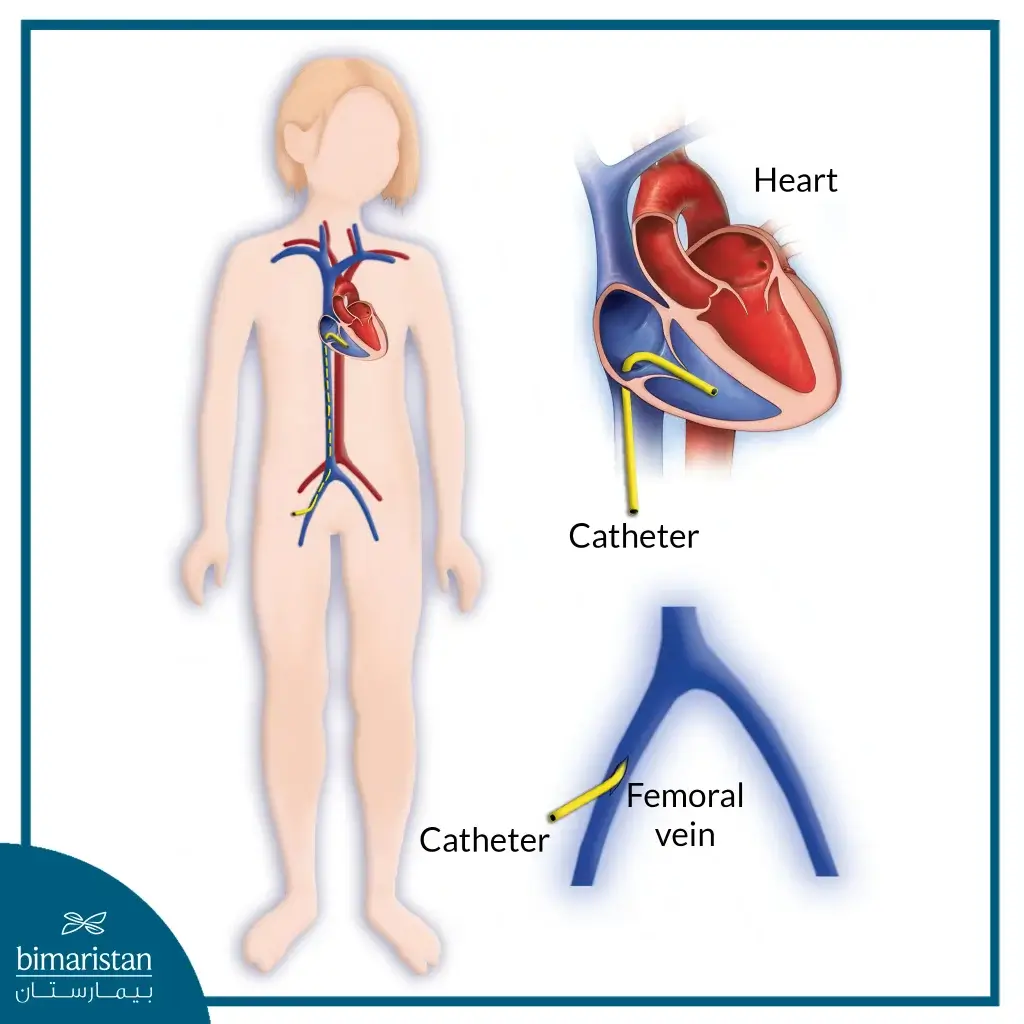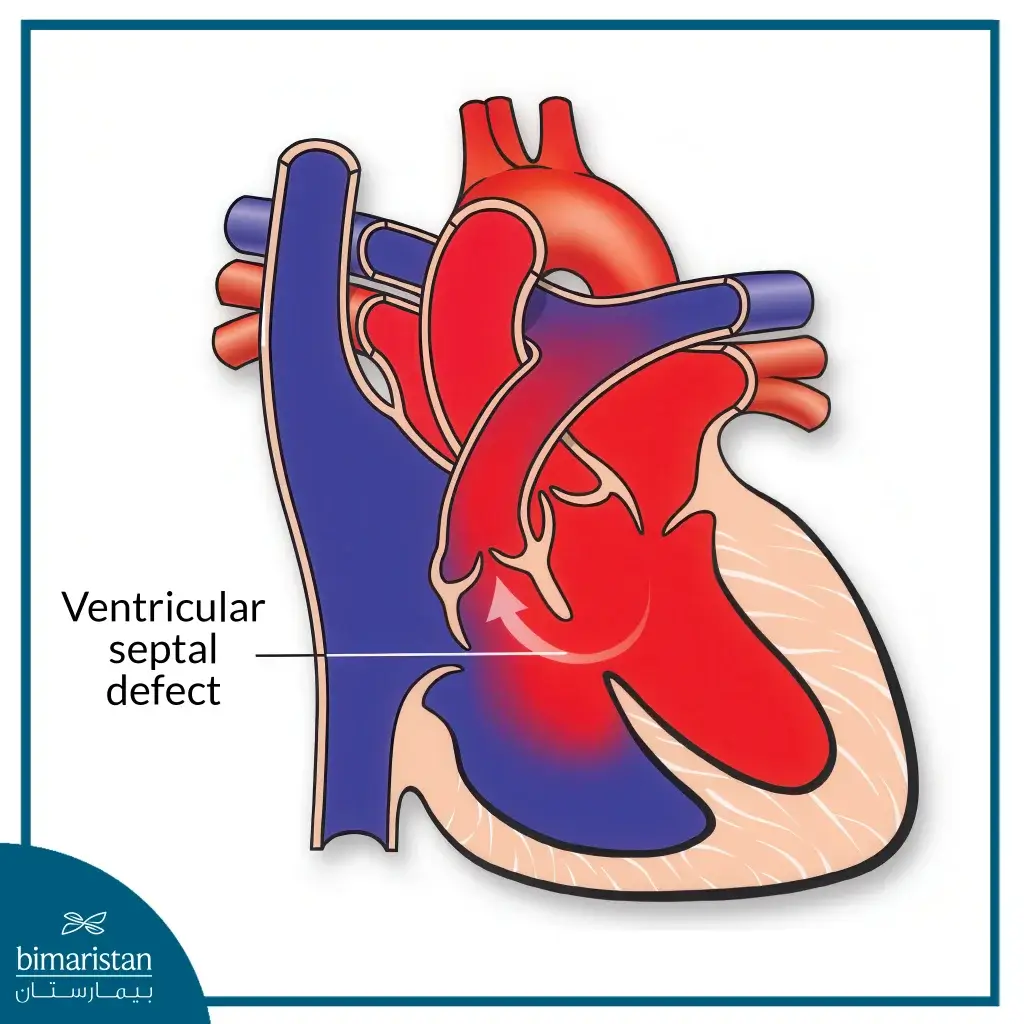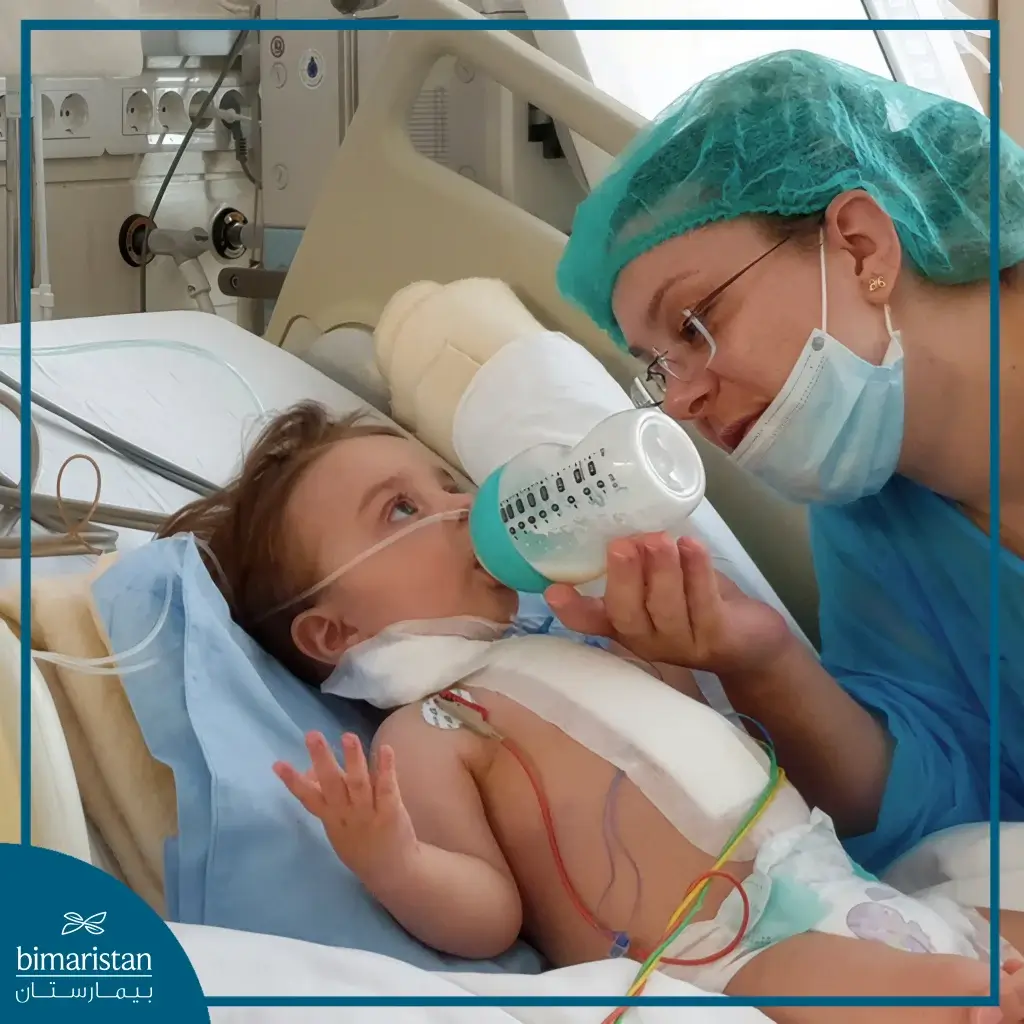Pediatric heart surgery is one of the most important medical interventions that gives thousands of children a new chance for a healthy and normal life. Whether the heart defects are simple or complex, early diagnosis and careful treatment steps play a crucial role in the success of the operation and achieving the best results. In this article, we will review when and why your child needs pediatric heart surgery, the most important modern techniques used, and the success rate that gives parents hope and reassurance to make the right decision with confidence and safety.
What is pediatric heart surgery?
Pediatric cardiac surgery is a branch of medicine that deals with the surgical treatment of heart diseases observed in children from infancy to adolescence. It is a procedure that aims to correct a structural issue in a child’s heart, used to treat abnormalities that impede proper blood flow and function, as about half of congenital heart defects require cardiac intervention or surgery, and it aims to correct congenital or acquired defects in a child’s heart, as these defects can be as simple as a small hole between the ears, or as complex as multiple abnormalities in the heart structure, such as tetralogy of Fallot, for example.
When does a child need heart surgery?
Some heart defects need to be repaired immediately after birth, but for others, it’s best to wait weeks, months, or years, as some heart defects may not need to be repaired. The need for pediatric heart surgery depends on the type and severity of the defect, and the first signs often appear right after birth or within the first few months:
- Cyanosis: Blue discoloration of the skin, lips, or nail bed (cyanosis), caused by not enough oxygen in the blood (hypoxia)
- Difficulty breathing: Damp, congested, or fluid-filled lungs (heart failure)
- Problems with the rate or rhythm of your heartbeat (arrhythmia)
- Slow growth: Delayed growth and development
- Fatigue during feeding and poor nutrition or sleep
How to diagnose heart defects before pediatric heart surgery
A congenital heart defect may be diagnosed during pregnancy or after birth. Signs of some heart defects can be seen during a routine ultrasound scan during pregnancy (fetal ultrasound). After the baby is born, the doctor may suspect a congenital heart defect if the baby has cyanosis or developmental delays, for example. The doctor may also hear a sound called a heart murmur while listening to the baby’s heart with a stethoscope.
Fortunately, most heart murmurs are harmless, meaning there is no heart defect and the murmur does not pose a health risk to the baby. However, some heart murmurs may be caused by changes in blood flow to and from the heart, and in such cases, early diagnosis is key to determining whether pediatric heart surgery may be necessary to correct the defect and ensure the child’s health.
Tests to diagnose a congenital heart defect before surgery include
- Pulse oximetry: A sensor is placed on the fingertip to record the amount of oxygen in the blood, and a lack of oxygen can be a sign of a heart or lung issue.
- Electrocardiogram (ECG or EKG). This quick test records the electrical activity of the heart and shows how it beats. Adhesive patches with sensors, called electrodes, are placed on the chest or sometimes on the arms or legs. The wires from these patches are connected to a computer, which prints or displays the results.
- Echocardiogram: Using sound waves to create images of the heart in motion, an echocardiogram shows how blood moves through the heart and its valves.
- Cardiac MRI: This test uses magnetic fields and radio waves to create detailed images of the heart. Cardiac MRI can be performed to diagnose and evaluate congenital heart defects as it gives three-dimensional images of the heart, allowing for accurate measurement of the heart chambers.
- Diagnostic cardiac catheterization: This test provides detailed information about blood flow and how the heart is working. The doctor inserts a thin, flexible tube called a catheter into a blood vessel (usually in the groin area) and guides it to the heart, and some heart treatments can be performed during cardiac catheterization.
If you are concerned about your child’s health, we can help you deal with pediatric congenital heart defects.
How is pediatric heart surgery performed?
One surgery may be enough to repair a heart defect, but sometimes a series of procedures may be required, and the technique used depends on the type of defect. And here are three different pediatric heart surgery techniques to repair congenital heart defects in children:
Pediatric open heart surgery with a heart-lung machine
This is when the surgeon uses a heart-lung bypass machine, where a surgical incision is made through the sternum while the child is under general anesthesia so that he does not feel any pain. Tubes are used to redirect blood through a special pump called a heart-lung bypass machine. This device adds oxygen to the blood and keeps it warm and circulating throughout the body while the surgeon repairs the heart.
The use of the machine allows the heart to be temporarily stopped in order to repair the heart muscle itself, heart valves, or blood vessels outside the heart. After the repair is completed, the heart is restarted, the machine is removed, and the chest bone incision and skin are closed.
Repairing many heart defects requires the use of a cardiopulmonary bypass (cardiopulmonary bypass machine) and stopping and opening the heart for pediatric heart surgery: Atrial septal defects (ASD), ventricular septal defects (VSD), transposition of the great arteries, tetralogy of Fallot and other complex abnormalities, and most pediatric heart surgeries are open-heart surgeries.
Minimally invasive surgery
In some heart defect repair procedures, an incision is made on the side of the chest between the ribs (thoracotomy), sometimes called closed heart surgery. This surgery can be performed using special instruments and a camera, but not all heart defects can be treated this way.
Catheterization in pediatric heart surgery
There is another way to repair heart defects without opening the chest, to treat some cases where a small tube is inserted into the femoral artery and passed to the heart. This method is called cardiac catheterization, but only some heart defects can be repaired this way.

The most common types of pediatric heart surgery
The technique of pediatric heart surgery varies according to the type of heart defect in each child; some may be complex and others less so, and the most common types of pediatric heart surgery are:
Ventricular septal defect (VSD) repair
The ventricular septum is the wall between the left and right ventricles (lower chambers) of the heart. One of the most common heart defects, a hole in the ventricular septum, called a VSD, allows oxygen-laden blood to mix with blood returning to the lungs. Over time, irregular heartbeats and other heart issues may occur.
By the age of one year, most small ventricular septal defects close on their own. However, ventricular septal defects that remain open after this age may require surgical closure to repair the ventricular septal defect. Larger ventricular septal defects that are small in certain parts of the ventricular septum, or those that cause heart failure or endocarditis (inflammation), require open-heart surgery. The hole in the septum is often closed with a patch, and some septal defects can be closed without surgery by inserting a small wire into the heart and placing a small device to close the defect.

Fixing the Fallout Quadrant
Tetralogy of Fallot is a congenital heart defect that usually involves four congenital heart defects and causes a child to turn blue (cyanosis). Complex surgery to repair tetralogy of Fallot, which treats multiple heart defects with a single open-heart surgery, is necessary and is often performed when the child is between 6 months and 2 years old. The surgery involves closing the ventricular septal defect with a patch and opening the enlarged muscle (stenosis), then placing a patch over the right ventricle and main pulmonary artery to improve blood flow to the lungs.
This procedure is performed if open-heart surgery needs to be postponed because the child is too sick to undergo surgery. During the shunt procedure, the surgeon makes an incision on the left side of the chest. Once the child is older, the shunt is closed, and the main heart repair is performed.
What is the success rate of pediatric heart surgery?
Pediatric heart surgery is more advanced than ever before. In the past, affected children rarely survived, and the improved survival rates are due in part to successful surgical care when these patients were infants and toddlers. The success rate of pediatric heart surgery depends on several factors, including the type of surgery, the age of the child and the child’s heart defect. In specialized centers, the success rate exceeds 90% for many pediatric heart surgeries.
Today, about 95% of children born with a non-critical defect are expected to live to at least age 18, and nearly 70% of those with a critical defect are expected to live to age 18. Fortunately, treatments continue to improve as doctors learn more about factors such as genetics, which can affect not only congenital heart disease but also how well children do after surgical treatment.
Comparison of pediatric heart surgery in Turkey vs. other countries
Pediatric heart surgery is one of the most prominent medical achievements that offers hope to many children around the world. Many developed countries offer high-quality services in this field, including Turkey, which provides effective treatment solutions at an affordable cost compared to other countries such as Germany and the United States.
| Criterion | Turkey | Germany | America |
|---|---|---|---|
| Cost | Relatively low | High | Very high |
| Quality of care | High in specialized centers | Excellent | Excellent |
| Waiting period | short | Medium | Sometimes long |
What are the average prices for pediatric heart surgery in Turkey?
The cost of pediatric heart surgery in Turkey varies according to the type of surgery:
| Procedure | Price (USD) |
|---|---|
| Ventricular septal defect surgery | From $8,000 |
| Valve replacement surgery | From 6000 dollars |
| Tetralogy of Fallot surgery | From $16,000 |
| Heart valve repair or repair | From $8,000 |
| Pediatric Mitral Valve Replacement | From $12,000 |
Why is pediatric heart surgery in Turkey an ideal option?
Pediatric heart surgery in Turkey is an ideal option due to several advantages:
- Affordable cost compared to other countries.
- Quality medical care and world-class physicians.
- State-of-the-art medical facilities and the use of the latest technology.
- Full medical tourism services, including accommodation and transportation.
- High success rate in operations.
- Easily accessible from many Arab countries.
This means that Turkey offers effective treatment at a lower cost and with excellent quality.

In conclusion, pediatric heart surgery is a vital procedure that gives children a chance for a healthy and normal life. The success of the operation depends on early diagnosis and the choice of modern techniques, and choosing the right hospital and specialized centers is an important step to ensure the best care. If you are looking for advanced and effective treatment, do not hesitate to consult our specialized doctors for the best treatment options for your child.
Sources:
- Kaneshiro, N. K. (2023, January 24). Pediatric heart surgery. MedlinePlus.
- NHS. (2021, September 7). Congenital heart disease – Treatment. NHS.

